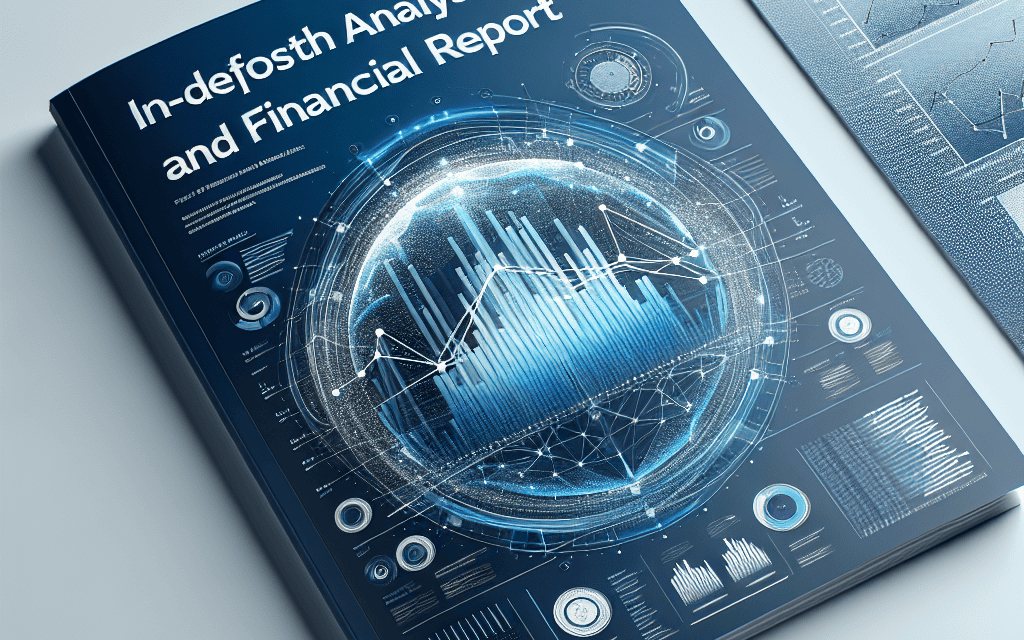“Insightful Analysis, Strategic Vision: Morgan Stanley’s Market Mastery”
Introduction
The Analyst Report on Morgan Stanley provides a comprehensive evaluation of the financial institution’s performance, strategic initiatives, and market positioning. This report delves into Morgan Stanley’s financial health, analyzing key metrics such as revenue growth, profitability, and asset management. It also examines the bank’s competitive landscape, highlighting its strengths and potential challenges in the global financial services sector. Additionally, the report assesses Morgan Stanley’s strategic direction, including its investment in technology, expansion into emerging markets, and efforts to enhance client services. Through detailed analysis, the report aims to offer valuable insights for investors, stakeholders, and industry observers interested in understanding Morgan Stanley’s current status and future prospects.
Understanding The Key Insights From Morgan Stanley’s Latest Analyst Report
Morgan Stanley, a leading global financial services firm, recently released its latest analyst report, offering a comprehensive overview of the current economic landscape and its implications for investors. This report provides valuable insights into market trends, investment strategies, and potential risks, making it an essential resource for stakeholders seeking to navigate the complexities of today’s financial environment. As we delve into the key insights from Morgan Stanley’s report, it is crucial to understand the broader economic context that shapes these analyses.
To begin with, the report highlights the ongoing challenges posed by global economic uncertainties. Factors such as geopolitical tensions, fluctuating commodity prices, and evolving trade policies continue to influence market dynamics. Morgan Stanley’s analysts emphasize the importance of staying informed about these developments, as they can have significant implications for investment decisions. Moreover, the report underscores the need for investors to adopt a flexible approach, allowing them to adjust their strategies in response to changing conditions.
In addition to addressing macroeconomic factors, the report provides a detailed examination of sector-specific trends. For instance, the technology sector remains a focal point, driven by rapid advancements and increasing digitalization across industries. Morgan Stanley’s analysts note that while the sector offers substantial growth potential, it also presents unique challenges, such as regulatory scrutiny and cybersecurity risks. Consequently, investors are advised to conduct thorough due diligence and consider diversification to mitigate potential downsides.
Furthermore, the report sheds light on the evolving landscape of sustainable investing. As environmental, social, and governance (ESG) considerations gain prominence, Morgan Stanley highlights the growing demand for investments that align with these principles. The report suggests that companies with strong ESG credentials are likely to benefit from increased investor interest and potentially achieve superior long-term performance. This trend underscores the importance of integrating ESG factors into investment analysis and decision-making processes.
Transitioning to the topic of monetary policy, the report discusses the actions of central banks and their impact on financial markets. With inflationary pressures persisting in various regions, central banks are faced with the challenge of balancing economic growth and price stability. Morgan Stanley’s analysts predict that interest rate adjustments will play a crucial role in shaping market conditions, influencing asset valuations and capital flows. Investors are encouraged to monitor central bank communications closely, as these can provide valuable insights into future policy directions.
Moreover, the report addresses the implications of technological innovation on the financial services industry itself. The rise of fintech and digital banking solutions is transforming traditional business models, offering both opportunities and challenges for established institutions. Morgan Stanley emphasizes the need for financial firms to embrace innovation and adapt to changing consumer preferences to remain competitive in this rapidly evolving landscape.
In conclusion, Morgan Stanley’s latest analyst report offers a wealth of information for investors seeking to understand the current economic environment and its impact on financial markets. By examining macroeconomic trends, sector-specific developments, and emerging investment themes, the report provides a comprehensive framework for informed decision-making. As the global economy continues to evolve, staying abreast of these insights will be essential for navigating the complexities of the financial landscape and achieving long-term investment success.
How Morgan Stanley’s Analyst Report Impacts Market Trends
Morgan Stanley, a leading global financial services firm, plays a pivotal role in shaping market trends through its comprehensive analyst reports. These reports, meticulously crafted by a team of seasoned analysts, provide investors with critical insights into various sectors, companies, and economic indicators. As a result, they significantly influence investment decisions and market movements. Understanding the impact of Morgan Stanley’s analyst reports on market trends requires an exploration of their content, credibility, and the broader market context in which they operate.
To begin with, Morgan Stanley’s analyst reports are renowned for their depth and accuracy. They encompass a wide range of analyses, including macroeconomic forecasts, sector-specific evaluations, and individual company assessments. By leveraging a wealth of data and sophisticated analytical tools, Morgan Stanley’s analysts offer projections and recommendations that are highly regarded by investors. These reports often include price targets, earnings forecasts, and buy, hold, or sell recommendations, which serve as valuable guidance for market participants. Consequently, when Morgan Stanley releases a report, it can lead to immediate reactions in stock prices, as investors adjust their portfolios based on the new information.
Moreover, the credibility of Morgan Stanley’s analyst reports is bolstered by the firm’s longstanding reputation and the expertise of its analysts. Investors and market participants place significant trust in the insights provided by Morgan Stanley, given its history of accurate predictions and thorough research. This trust amplifies the impact of their reports on market trends, as investors are more likely to act on recommendations from a reputable source. Furthermore, the firm’s global reach and access to a vast array of resources enable its analysts to provide a comprehensive view of the market, further enhancing the credibility and influence of their reports.
In addition to their content and credibility, the timing of Morgan Stanley’s analyst reports also plays a crucial role in shaping market trends. These reports are often released in anticipation of or in response to significant market events, such as earnings announcements, economic data releases, or geopolitical developments. By providing timely analysis and insights, Morgan Stanley helps investors navigate periods of uncertainty and volatility. This timely dissemination of information can lead to swift market reactions, as investors seek to capitalize on new opportunities or mitigate potential risks.
Furthermore, the broader market context in which Morgan Stanley’s analyst reports are released also affects their impact on market trends. In a highly interconnected global economy, market participants are constantly seeking reliable information to make informed decisions. Morgan Stanley’s reports, with their comprehensive analysis and forward-looking perspectives, provide a valuable resource for investors trying to understand complex market dynamics. As a result, these reports can influence not only individual stock prices but also broader market indices and trends.
In conclusion, Morgan Stanley’s analyst reports have a profound impact on market trends due to their comprehensive content, credibility, timing, and the broader market context. By providing investors with critical insights and recommendations, these reports shape investment decisions and drive market movements. As a trusted source of financial analysis, Morgan Stanley continues to play a vital role in guiding market participants through the complexities of the global financial landscape. As such, understanding the influence of these reports is essential for anyone seeking to navigate the ever-evolving world of finance.
A Deep Dive Into Morgan Stanley’s Investment Recommendations
Morgan Stanley, a leading global financial services firm, has long been recognized for its comprehensive investment recommendations and strategic insights. As investors navigate the complexities of the financial markets, Morgan Stanley’s analyses and forecasts serve as a crucial guide. The firm’s investment recommendations are rooted in a deep understanding of market dynamics, economic indicators, and sector-specific trends, providing investors with a robust framework for decision-making.
To begin with, Morgan Stanley’s approach to investment recommendations is characterized by a meticulous analysis of macroeconomic factors. The firm closely monitors global economic trends, including GDP growth rates, inflation, and interest rate movements, which are pivotal in shaping investment strategies. By evaluating these indicators, Morgan Stanley is able to anticipate shifts in market sentiment and adjust its recommendations accordingly. This macroeconomic perspective is complemented by a thorough examination of geopolitical developments, which can have profound implications for global markets. For instance, trade tensions, regulatory changes, and political instability are all factors that Morgan Stanley considers when formulating its investment outlook.
In addition to macroeconomic analysis, Morgan Stanley places significant emphasis on sector-specific research. The firm employs a team of industry experts who delve into the nuances of various sectors, such as technology, healthcare, and energy. This sectoral focus allows Morgan Stanley to identify emerging trends and investment opportunities that may not be immediately apparent from a broader market perspective. For example, in the technology sector, the firm has been at the forefront of identifying the potential of artificial intelligence and its transformative impact on industries. By leveraging its sector expertise, Morgan Stanley provides investors with targeted recommendations that align with evolving market dynamics.
Moreover, Morgan Stanley’s investment recommendations are underpinned by rigorous quantitative analysis. The firm utilizes advanced financial models and data analytics to assess the valuation and performance of individual securities. This quantitative approach enables Morgan Stanley to identify undervalued assets and potential risks, thereby enhancing the precision of its investment advice. Furthermore, the firm integrates environmental, social, and governance (ESG) considerations into its analysis, recognizing the growing importance of sustainable investing. By incorporating ESG factors, Morgan Stanley not only addresses the ethical concerns of investors but also identifies companies that are well-positioned for long-term growth.
Transitioning to the firm’s communication strategy, Morgan Stanley ensures that its investment recommendations are accessible and actionable for a diverse clientele. The firm disseminates its insights through a variety of channels, including detailed research reports, webinars, and client meetings. This multi-faceted approach allows Morgan Stanley to cater to the informational needs of institutional investors, financial advisors, and individual clients alike. By providing clear and concise guidance, the firm empowers investors to make informed decisions in an ever-changing market environment.
In conclusion, Morgan Stanley’s investment recommendations are distinguished by their comprehensive nature and strategic foresight. Through a combination of macroeconomic analysis, sector-specific research, and quantitative evaluation, the firm offers a holistic view of the investment landscape. As investors seek to navigate the complexities of global markets, Morgan Stanley’s insights serve as a valuable resource, guiding them towards informed and strategic investment decisions. With a commitment to excellence and innovation, Morgan Stanley continues to be a trusted partner for investors worldwide.
Comparing Morgan Stanley’s Analyst Report With Other Financial Institutions

In the realm of financial analysis, Morgan Stanley’s analyst reports stand as a benchmark for precision and depth, offering insights that are both comprehensive and forward-looking. When comparing Morgan Stanley’s reports to those of other financial institutions, several distinguishing features emerge, underscoring the firm’s reputation for excellence in financial analysis. To begin with, Morgan Stanley’s reports are renowned for their meticulous attention to detail. Analysts at Morgan Stanley employ a rigorous methodology, incorporating both quantitative and qualitative data to provide a holistic view of market trends and company performance. This approach ensures that their reports are not only data-driven but also contextually rich, offering investors a nuanced understanding of the financial landscape. In contrast, while other financial institutions also provide detailed reports, they often lack the same level of integration between data analysis and market context, which can lead to a more fragmented understanding of the issues at hand.
Moreover, Morgan Stanley’s reports are distinguished by their forward-looking perspective. The firm’s analysts are adept at identifying emerging trends and potential disruptions, providing clients with strategic insights that go beyond the immediate financial metrics. This forward-thinking approach is particularly valuable in today’s rapidly changing economic environment, where anticipating future developments can be as crucial as understanding current conditions. Other financial institutions, while competent in their analyses, may not always place the same emphasis on future-oriented insights, potentially limiting their utility for long-term strategic planning.
Furthermore, the accessibility and clarity of Morgan Stanley’s reports set them apart from many of their peers. The firm places a strong emphasis on clear communication, ensuring that complex financial concepts are presented in a manner that is both understandable and actionable for a wide range of investors. This commitment to clarity is reflected in the structured format of their reports, which typically include executive summaries, detailed analyses, and actionable recommendations. In comparison, reports from other financial institutions can sometimes be dense and jargon-laden, making it challenging for investors to extract key insights without extensive financial expertise.
Additionally, Morgan Stanley’s global reach and diverse expertise enable their analysts to provide a truly international perspective. The firm’s extensive network of analysts across different regions allows them to incorporate a wide array of market insights, offering a comprehensive view that is often unmatched by other institutions. This global perspective is particularly advantageous for investors seeking to understand the interconnectedness of global markets and the potential implications for their portfolios. While other financial institutions may also have a global presence, the depth and breadth of Morgan Stanley’s international analysis often provide a more cohesive and integrated view of global financial dynamics.
In conclusion, while many financial institutions offer valuable analyst reports, Morgan Stanley’s reports are distinguished by their meticulous detail, forward-looking insights, clarity, and global perspective. These attributes not only enhance the utility of their reports for investors but also reinforce Morgan Stanley’s position as a leader in financial analysis. As investors navigate the complexities of the financial markets, the insights provided by Morgan Stanley’s analyst reports serve as a critical tool for informed decision-making, setting a high standard for excellence in the field of financial analysis.
The Role Of Morgan Stanley’s Analyst Report In Portfolio Management
Morgan Stanley’s analyst reports play a pivotal role in the realm of portfolio management, serving as a cornerstone for investors seeking to make informed decisions. These reports, meticulously crafted by seasoned analysts, provide a comprehensive analysis of market trends, company performance, and economic indicators. As such, they are indispensable tools for portfolio managers who aim to optimize their investment strategies and achieve superior returns.
To begin with, Morgan Stanley’s analyst reports offer in-depth insights into various sectors and industries, enabling portfolio managers to identify potential opportunities and risks. By examining these reports, managers can gain a nuanced understanding of market dynamics, which is crucial for making strategic investment decisions. For instance, an analyst report might highlight emerging trends in the technology sector, prompting a portfolio manager to adjust their asset allocation to capitalize on anticipated growth. This proactive approach is essential in a constantly evolving market landscape, where timely information can be the difference between success and failure.
Moreover, the reports provide detailed evaluations of individual companies, including financial performance, competitive positioning, and future prospects. This granular analysis allows portfolio managers to assess the intrinsic value of a company and determine whether it aligns with their investment objectives. By leveraging the insights from Morgan Stanley’s analysts, managers can make more informed decisions about which stocks to buy, hold, or sell. This level of analysis is particularly valuable in volatile markets, where the ability to discern value from noise is paramount.
In addition to company-specific insights, Morgan Stanley’s analyst reports also offer macroeconomic analysis, which is crucial for understanding the broader economic environment. This includes assessments of interest rates, inflation, and geopolitical factors that could impact market performance. By incorporating these macroeconomic insights into their decision-making process, portfolio managers can better anticipate market shifts and adjust their strategies accordingly. For example, if an analyst report predicts a rise in interest rates, a manager might consider reducing exposure to interest-sensitive sectors such as real estate or utilities.
Furthermore, the credibility and expertise of Morgan Stanley’s analysts lend significant weight to their reports. These professionals possess a deep understanding of financial markets and employ rigorous methodologies to ensure the accuracy and reliability of their analyses. As a result, portfolio managers can trust that the information provided is both comprehensive and objective, allowing them to make decisions with greater confidence. This trust is essential in an industry where the stakes are high and the margin for error is slim.
Transitioning to the practical application of these reports, portfolio managers often integrate the insights gained into their investment models and strategies. By doing so, they can enhance their portfolio’s performance and mitigate potential risks. For instance, a manager might use the data from an analyst report to perform scenario analysis, stress-testing their portfolio against various market conditions. This proactive approach enables managers to identify vulnerabilities and implement measures to safeguard their investments.
In conclusion, Morgan Stanley’s analyst reports are invaluable resources for portfolio managers, providing critical insights that inform investment decisions. By offering detailed analyses of market trends, company performance, and economic indicators, these reports empower managers to navigate the complexities of financial markets with greater precision and confidence. As such, they play an essential role in the pursuit of optimal portfolio performance and long-term investment success.
Analyzing The Economic Forecasts In Morgan Stanley’s Latest Report
Morgan Stanley’s latest economic report offers a comprehensive analysis of the global economic landscape, providing valuable insights into the factors shaping the current and future economic environment. The report delves into various aspects of the economy, including growth projections, inflation trends, and monetary policy implications, offering a nuanced perspective that is essential for investors, policymakers, and stakeholders seeking to navigate the complexities of today’s economic climate.
To begin with, Morgan Stanley’s report highlights the uneven nature of economic recovery across different regions. While some economies are experiencing robust growth, others are grappling with persistent challenges that hinder their recovery. This divergence is attributed to several factors, including varying levels of vaccination rates, fiscal stimulus measures, and structural economic differences. For instance, advanced economies with high vaccination rates and substantial fiscal support have generally fared better, whereas emerging markets continue to face obstacles such as limited access to vaccines and constrained fiscal capacity.
Transitioning to inflation, the report underscores the complexities surrounding current inflationary pressures. Morgan Stanley notes that while inflation has surged in many parts of the world, the underlying causes are multifaceted. Supply chain disruptions, labor market mismatches, and rising commodity prices are identified as key drivers of inflation. However, the report also emphasizes that these factors are largely transitory, suggesting that inflationary pressures may ease as supply chains stabilize and labor markets adjust. Nevertheless, the report cautions that persistent inflation could pose risks to economic stability if not addressed through appropriate policy measures.
In terms of monetary policy, Morgan Stanley’s analysis suggests that central banks are at a critical juncture. The report indicates that while some central banks have begun to taper their asset purchases in response to improving economic conditions, others remain cautious, prioritizing support for growth over concerns about inflation. This divergence in monetary policy approaches reflects the varying economic conditions and inflationary pressures faced by different countries. Morgan Stanley advises that central banks should carefully calibrate their policy responses to avoid derailing the recovery while ensuring that inflation expectations remain anchored.
Furthermore, the report delves into the implications of fiscal policy on economic growth. Morgan Stanley highlights the importance of continued fiscal support in sustaining the recovery, particularly in regions where private sector demand remains weak. The report argues that targeted fiscal measures can help address structural challenges, such as income inequality and infrastructure deficits, thereby fostering more inclusive and sustainable growth. However, it also warns of the potential risks associated with high levels of public debt, urging governments to strike a balance between providing necessary support and maintaining fiscal sustainability.
In conclusion, Morgan Stanley’s latest economic report provides a detailed and insightful analysis of the current economic landscape, highlighting the complexities and challenges that lie ahead. By examining the interplay between growth, inflation, and policy responses, the report offers a valuable framework for understanding the dynamics shaping the global economy. As the world continues to navigate the path to recovery, the insights provided by Morgan Stanley serve as a crucial guide for decision-makers seeking to foster a resilient and sustainable economic future.
The Influence Of Morgan Stanley’s Analyst Report On Investor Sentiment
Morgan Stanley, a leading global financial services firm, has long been a significant player in shaping investor sentiment through its comprehensive analyst reports. These reports, which provide in-depth analysis and forecasts on various sectors and companies, are highly regarded in the financial community. They serve as a critical tool for investors seeking to make informed decisions in an ever-evolving market landscape. The influence of Morgan Stanley’s analyst reports on investor sentiment is profound, as they often set the tone for market expectations and can lead to substantial shifts in stock prices.
To begin with, Morgan Stanley’s analyst reports are meticulously crafted by a team of seasoned analysts who possess a deep understanding of market dynamics. These analysts employ a combination of quantitative models and qualitative assessments to evaluate the potential performance of stocks, sectors, and the broader economy. By doing so, they provide investors with a comprehensive view of potential risks and opportunities. This rigorous approach ensures that the reports are not only informative but also reliable, thereby earning the trust of investors worldwide.
Moreover, the impact of these reports is amplified by Morgan Stanley’s reputation as a thought leader in the financial industry. When Morgan Stanley issues a report, it is often perceived as a reflection of broader market trends. This perception is further reinforced by the firm’s extensive media coverage and the widespread dissemination of its reports through various financial news platforms. As a result, the insights and recommendations contained within these reports can significantly influence investor behavior, leading to increased trading volumes and volatility in the affected stocks.
In addition to shaping market expectations, Morgan Stanley’s analyst reports also play a crucial role in guiding corporate strategies. Companies often pay close attention to these reports, as they provide valuable feedback on market perceptions and investor expectations. By aligning their strategies with the insights provided by Morgan Stanley, companies can enhance their market positioning and improve investor confidence. This symbiotic relationship between Morgan Stanley and the corporate world underscores the far-reaching impact of its analyst reports.
Furthermore, the influence of Morgan Stanley’s analyst reports extends beyond individual stocks and sectors. These reports often include macroeconomic analyses that offer insights into global economic trends and potential policy shifts. Such analyses are invaluable for investors seeking to navigate complex geopolitical landscapes and anticipate changes in monetary policy. By providing a holistic view of the economic environment, Morgan Stanley’s reports enable investors to make more informed decisions, thereby enhancing their ability to achieve long-term financial goals.
However, it is important to note that while Morgan Stanley’s analyst reports are influential, they are not infallible. The financial markets are inherently unpredictable, and even the most well-researched reports can be subject to unforeseen events and market fluctuations. Therefore, investors are advised to use these reports as one of many tools in their decision-making process, rather than relying solely on them.
In conclusion, Morgan Stanley’s analyst reports wield significant influence over investor sentiment, shaping market expectations and guiding corporate strategies. Through their rigorous analysis and comprehensive insights, these reports provide investors with the information needed to navigate the complexities of the financial markets. As such, they remain an indispensable resource for investors seeking to make informed decisions in an ever-changing economic landscape.
Q&A
1. **What is an Analyst Report?**
An analyst report is a document prepared by financial analysts that provides insights, evaluations, and recommendations on a particular company, industry, or financial instrument.
2. **Who is Morgan Stanley?**
Morgan Stanley is a leading global financial services firm providing investment banking, securities, wealth management, and investment management services.
3. **What is typically included in a Morgan Stanley Analyst Report?**
A Morgan Stanley analyst report typically includes an overview of the company or sector being analyzed, financial performance data, market trends, risk assessments, and investment recommendations.
4. **How does Morgan Stanley rate stocks in their reports?**
Morgan Stanley uses a rating system that often includes terms like “Overweight,” “Equal-weight,” and “Underweight” to indicate their investment recommendation relative to a benchmark.
5. **What is the purpose of a Morgan Stanley Analyst Report?**
The purpose is to provide investors with detailed analysis and insights to help them make informed investment decisions.
6. **How often are Morgan Stanley Analyst Reports published?**
The frequency can vary, but reports are often published quarterly or in response to significant market events or company announcements.
7. **Who uses Morgan Stanley Analyst Reports?**
These reports are used by institutional investors, individual investors, financial advisors, and other market participants to guide investment strategies.
Conclusion
Morgan Stanley’s analyst report provides a comprehensive evaluation of the company’s financial health, market position, and future prospects. The report typically includes an analysis of recent financial performance, including revenue, profit margins, and cash flow, as well as an assessment of the company’s strategic initiatives and competitive landscape. It may also offer insights into macroeconomic factors affecting the industry and Morgan Stanley’s positioning within it. The conclusion of such a report would likely summarize the key findings, offering a recommendation on the stock’s potential as an investment, whether it be a buy, hold, or sell, based on the analysis of risks and opportunities.





